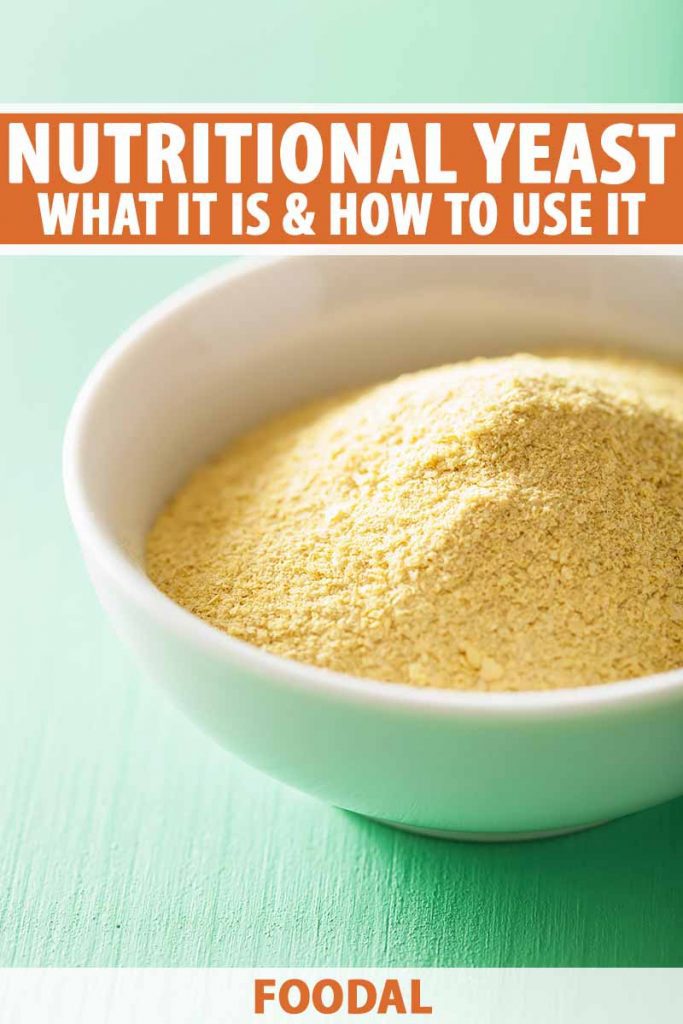We occasionally link to goods offered by vendors to help the reader find relevant products. Some of these may be affiliate based, meaning we earn small commissions (at no additional cost to you) if items are purchased. Here is more about what we do.
Maybe you’ve heard of nutritional yeast before, and you’re wondering what the deal is.
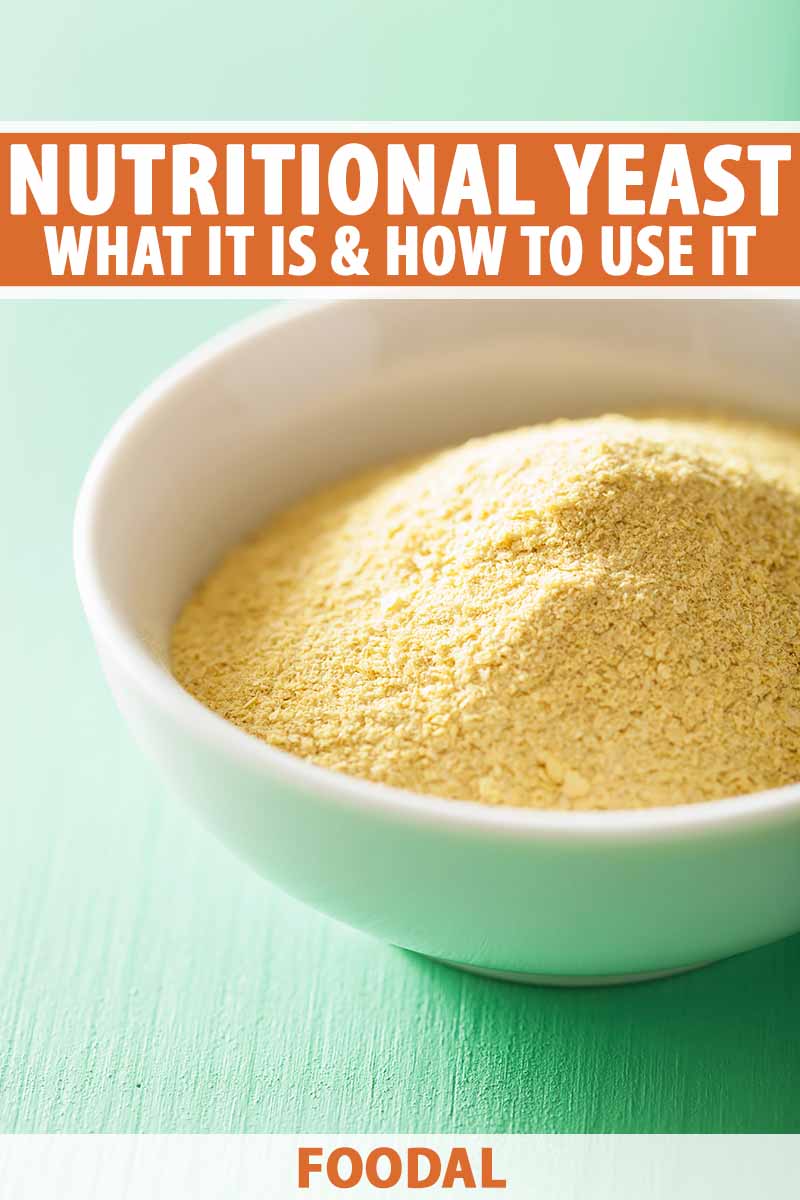
Does it have some connection to the leavening commonly used in baking?
Why do the vegans in your life always seem to be going on and on about it?
Does it offer any nutritional benefits?
And perhaps most importantly:
Does it taste good?
We’re here to explain all this and more. So grab a green juice or a smoothie, sit back, and relax while we explore the mysteries of nutritional yeast.
What Is Nutritional Yeast?
A Bit of Background
According to the “Oxford Companion to Food,” consuming yeast to gain a nutritional boost dates back to at least the 19th century, when consuming yeast extract or brewer’s yeast pills was not uncommon – and you’ll still find these products in health food and grocery stores today.
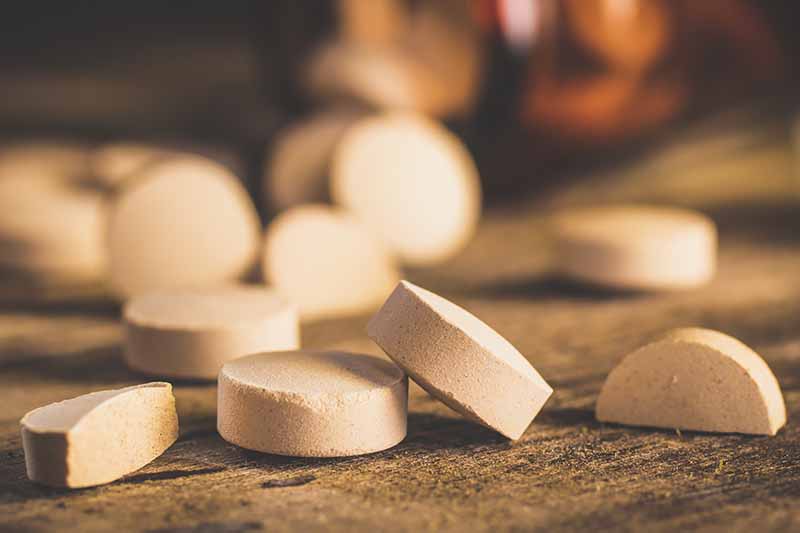
Not so long ago, when nutrition was still a nascent scientific field, researchers studied the potential for “a stable form of vitamine [sic]” to be useful “in the prevention and cure of certain nutritional deficiency diseases.”
Atherton Seidell, a chemist at the Hygienic Laboratory, which is known as the NIH today, published an article in the American Journal of Pharmacy in 1916 regarding the potential health benefits of brewer’s yeast. Seidell claimed waste produced by the brewing industry offered a unique opportunity in terms of bang for one’s buck, as a cheap source of “vitamines.”
It’s important to understand that at this time, vitamins had just recently been discovered. A “hitherto unrecognized” factor must have been responsible for contributing to normal metabolism and warding off diseases related to nutritional deficiencies, such as beriberi and pellagra.
Removing any leftover beer from the mush left over at the bottom of brewers’ barrels, heating, cooling, and then filtering it resulted in a vitamin-rich autolyzed yeast product that would have otherwise gone to waste.
In experiments on pigeons fed nothing but polished rice, Seidell found supplementing their diets with autolyzed yeast helped to prevent or cure weight loss, paralysis, and death in the nutrient-starved pigeons.
And so, he and other scientists wondered – what dose would be required to supplement the diets of humans? How could the extract be delivered, and how else might it be processed and concentrated? How could you tell if processing removed the vitamins, or left them intact?
When the yeast industry was in decline a few years later, the famous Fleischmann brothers with the yeast company of the same name funded their own study and launched an advertising campaign. “Yeast for Health” tripled sales for the company in the years to follow, though some of the health claims advertised were dubious at best, promising cures for ailments like acne and the common cold.

Red Star was first to market in the US with their dried nutritional yeast flakes in 1950, and their popularity as a healthy plant-based product took off in the ‘50s and ‘60s. Old heads might still call it hippie dust, if you’ve ever heard that term and let your imagination run wild…
Nutritional yeast’s popularity as a dietary supplement took another dive in the ‘80s, via a new form of consciousness-raising about the notorious Candida, a yeast maligned for causing fungal infections. As numerous books on the topic hit the shelves, though made from an entirely unrelated form of yeast, sales took a hit.
Commonly referred to today as “nooch,” this word does not yet hold a place in any of the prominent English-language dictionaries (looking at you, OED and Merriam-Webster’s).
This nickname may be traced back to an Urban Dictionary entry from 2007 that credits Isa Chandra Moskowitz of Post Punk Kitchen (PPK), a vegan cooking show that aired on Brooklyn Public Access Television from 2002 to 2005, with coining it. Today, the PPK community lives on in Moskowitz’s blog of the same name.
Ingredients
So, what exactly are these yellowish flakes or powder anyway?
Well, it all starts with yeast – but the yeast involved here no longer holds the power to leaven baked goods and help them to rise.
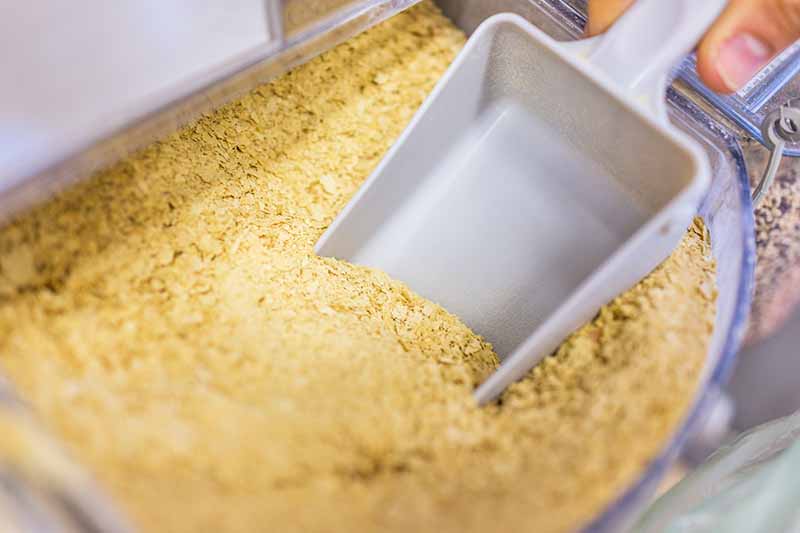
Instead, the yeast has been heated after fermenting, so its leavening powers are rendered inactive. This particular yeast, usually a strain of Saccharomyces cerevisiae, is cultured in a medium that’s rich in glucose. Typically, it’s grown on a combination of beet molasses and sugarcane, and the resulting flakes are high in glutamate.
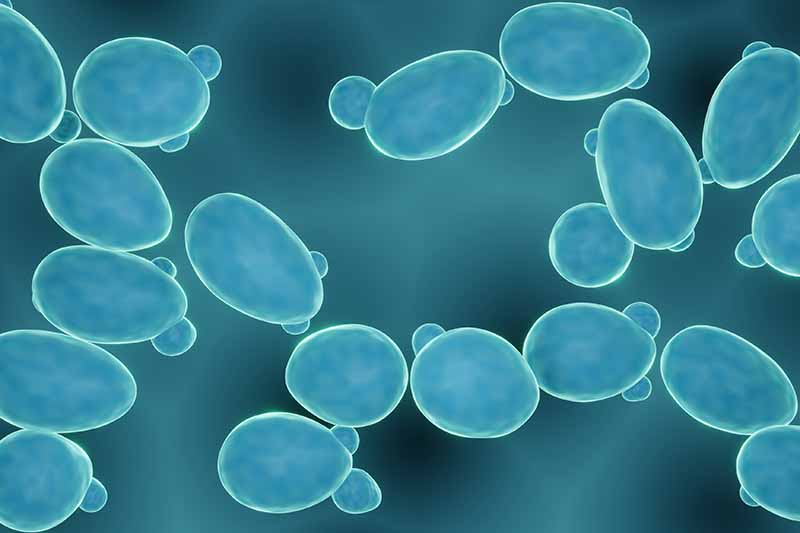
That’s right – the nutty, savory, cheesy flavor of nutritional yeast is comprised of the same umami-rich compounds that you’ll find in foods like parmesan cheese, mushrooms, miso, or tomatoes. This is also the same ingredient responsible for the “G” portion of MSG, an ingredient sometimes added to foods to boost their umami power.
Nutritional Makeup
With 5 grams of protein per 2-tablespoon serving, adding nutritional yeast to our snacks and meals is a wonderful way for vegans and others to give their protein intake a little boost without having to say, “What, beans again?” or needing to reach for any animal-based products.
Of course, it’s also worth pointing out that like other vegan foods, nooch does not supply a complete form of protein, and should be considered part of a balanced, healthy diet – not a potential substitute for other proteins altogether.
As for the other macronutrients, it’s fat-free. And although nutritional yeast does contain some carbs, the majority of these come in the form of healthy dietary fiber.
Iron also contributes to the nutritional mix, as well as a touch of calcium and potassium. Though low in sodium, it does contain a bit of this as well.
Packed with B vitamins, it’s an excellent source of folic acid, niacin, riboflavin, and thiamin. Yeasts naturally contain every variety of B vitamin except B12, though fortified nutritional yeast is often supplemented with this nutrient as well, a boon to non-meat-eaters who often lack it in their diets.
These vitamins help to support healthy metabolism, as well as hair, skin, and nail health. Thiamin in particular supports nerve health while folic acid helps to create and maintain new cells.
B vitamins also act as coenzymes, pairing with enzymes in the body and helping to produce various reactions in our cells, such as converting the foods that we eat into energy.
Dietary Benefits
Nutritional yeast is a low-sodium, vegan product, which means it’s also cholesterol-free. These tasty flakes add the perfect finishing touch to snacks and sauces without a ton of added salt.
Though sodium is an essential nutrient, most Americans consume far too much of it each day. Flavorful, low-sodium ingredients like herbs and spices, as well as nutritional yeast, can help to curb cravings for less healthy foods, and increase intake of nutrient-rich ones instead.
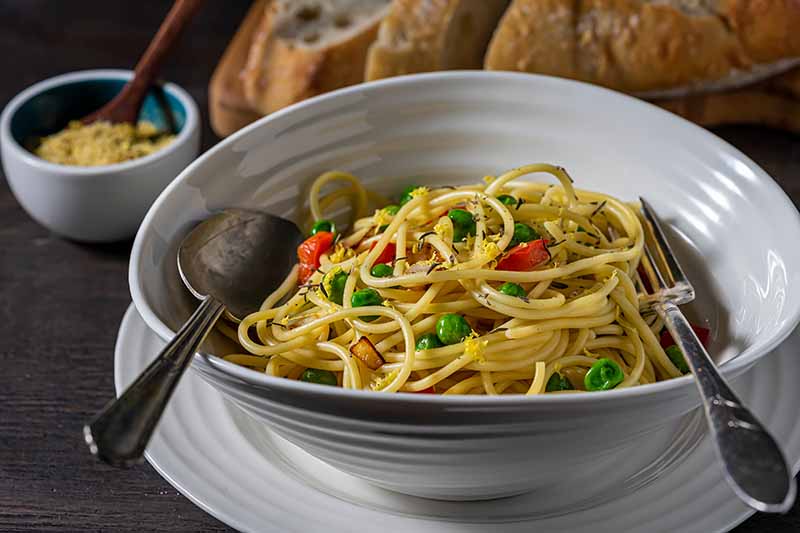
Lactose-free diners will rejoice, since nooch can help to provide a bit of what they’re missing as a substitute for dairy, adding a touch of cheesy flavor to a variety of dishes either as an ingredient incorporated in recipes, or a seasoning sprinkled on top.
It’s also gluten-free, though eaters with celiac disease or other wheat intolerances or allergies should be sure to check the label on the product they choose to confirm this.
Suggested Uses
First and foremost, nutritional yeast is known for its savory, cheesy, nutty flavor.
It serves as a delicious substitute for parmesan on top of pasta, salad, or soup. It’s tasty sprinkled on roasted vegetables or a baked sweet potato, or stirred into a tofu scramble. And snackers adore tossing popcorn with a few big dashes.

You can also sprinkle a little into your smoothies as a superfood add-in.
Ready to start using this delicious, vegan and lactose-free ingredient in your meals?
First up, you’ll need to get your hands on some.
Personally, I prefer Bragg’s brand (the same company known for their savory, soy sauce-like liquid aminos). But I’ve tried others and I can’t say that I’ve noticed a clear difference in flavor from one brand to the next.
Many grocery stores and spice or seasoning companies carry their own brand in a handy shaker bottle or bag.
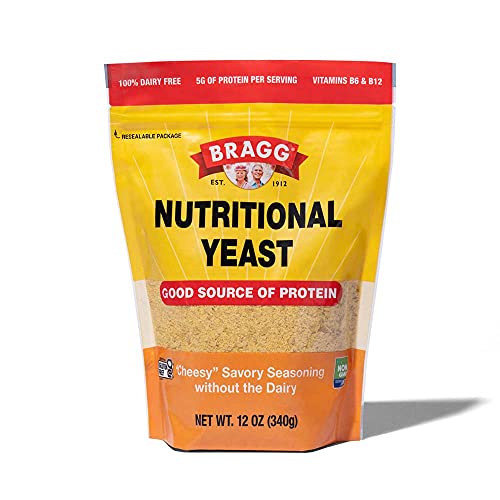
Bragg Premium Nutritional Yeast Seasoning, available on Amazon
Bragg Premium Nutritional Yeast Seasoning is available on Amazon in a 12-ounce zip-top pouch, or in a set of two handy shaker-top canisters.
In addition to the original variety, Bragg also offers flavored options in roasted garlic and smoky BBQ. These are also available on Amazon.
To begin your nooch-filled menu planning, here are a few recipes from Foodal to get you started:
- Vegan Lemon Basil Orzo Pasta Salad
- Easy Asparagus Risotto with Oven-Dried Tomatoes
- Vegan Marinara Stuffed Roasted Eggplant
- Vegan Mushroom and Herb Risotto
- Deep-Fried Vegan Jalapeno Poppers
In addition to these plant-based delights, I am also a huge advocate of vegan nacho cheese dip, made from scratch.
Though this may sound like the ultimate oxymoron, or an utter impossibility, I first dipped my toe – er, chip – into this gooey deliciousness for the first time about five years ago, and it’s become a snacking standby at my house on game day.

Vegan for Everybody, available on Amazon
Made with a thick, savory, and satisfying base of boiled potato and carrot, with plenty of nooch, some chopped onion and minced poblano, and other flavorful ingredients like canned chipotles in adobo, cumin, and mustard powder mixed in, the rich, orangey-yellow color and savory, spicy flavor is exactly what you’re looking for when you’ve got a bowl of naked tortilla chips on your hands and a case of the vegan munchies.
You’ll find this recipe in “Vegan for Everybody” from America’s Test Kitchen, and you can snag a copy to add to your cookbook shelf on Amazon as a perfect holiday cookbook gift for yourself or for someone interested in vegan cooking and baking. I also highly recommend the recipe from this book for kale Caesar salad!
‘Nuff Said About Nooch
Whether you’re a vegan in search of more varied options, a flavor-seeker who’s aiming to cut down on the salt, or an eager omnivore who believes everything’s worth at least one taste, give nutritional yeast a try.
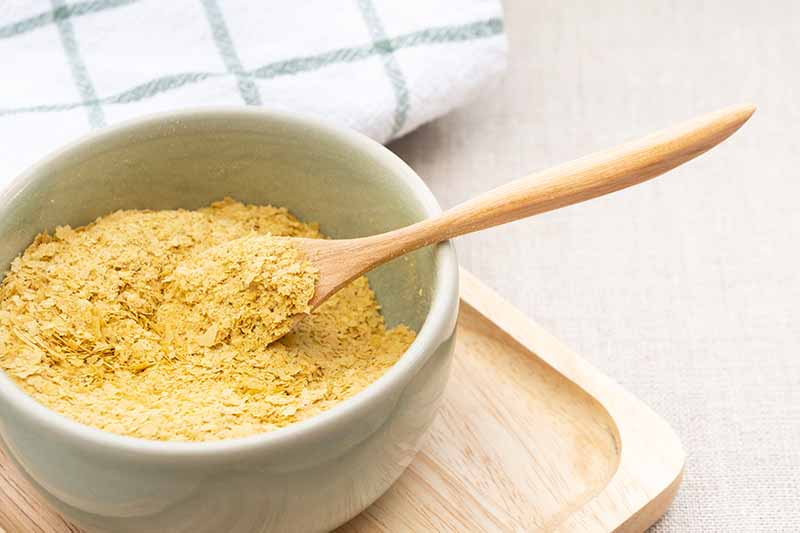
Though I will be the first to tell you there are no true substitutes in the world today for cheese made from dairy, I love the unexpected flavor that nooch adds to some of my favorite foods, and the opportunity that it presents to get a little more creative in the kitchen.
This wasn’t an ingredient that I grew up with, but I’m eager to share it with others today. And though my own adventures in full-time vegan eating are in the past, my vegan friends are always psyched to see that I have some nutritional yeast on hand.
Delicious dining awaits! How will you add nutritional yeast to your meals? Will it feature prominently at snack time? Share your suggestions in the comments below.
And for more guides to whole foods and healthy eating, check out these articles next:
© Ask the Experts, LLC. ALL RIGHTS RESERVED. See our TOS for more details. Product photos via Amazon. Uncredited photos via Shutterstock.
About Allison Sidhu
Allison M. Sidhu is a culinary enthusiast from southeastern Pennsylvania who has returned to Philly after a seven-year sojourn to sunny LA. She loves exploring the local restaurant and bar scene with her best buds. She holds a BA in English literature from Swarthmore College and an MA in gastronomy from Boston University. When she’s not in the kitchen whipping up something tasty (or listening to the latest food podcasts while she does the dishes!) you’ll probably find Allison tapping away at her keyboard, chilling in the garden, curled up with a good book (or ready to dominate with controller in hand in front of the latest video game) on the couch, or devouring a dollar dog and crab fries at the Phillies game.

